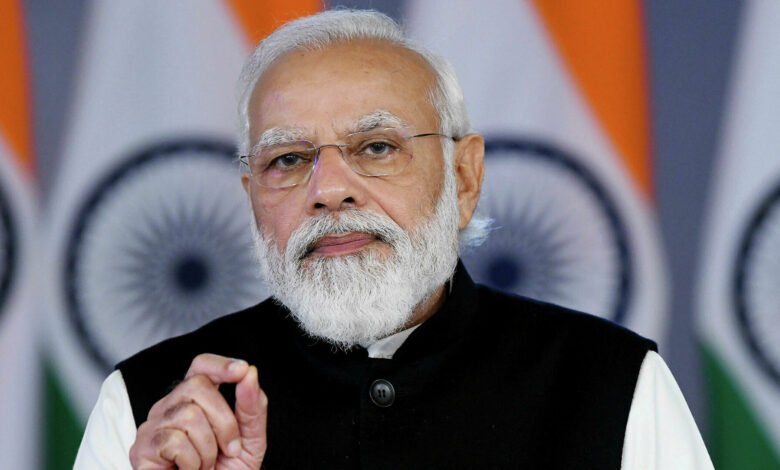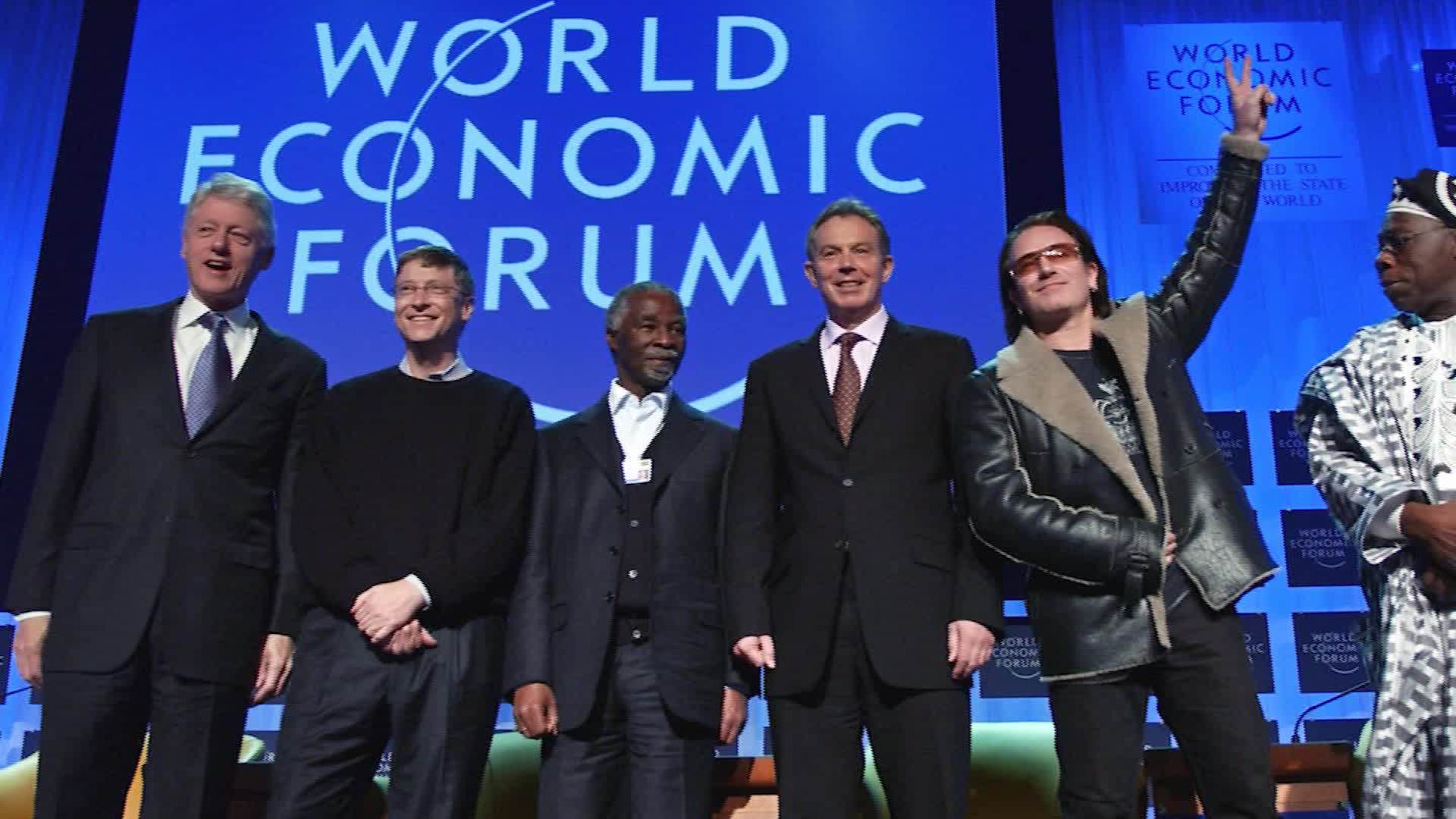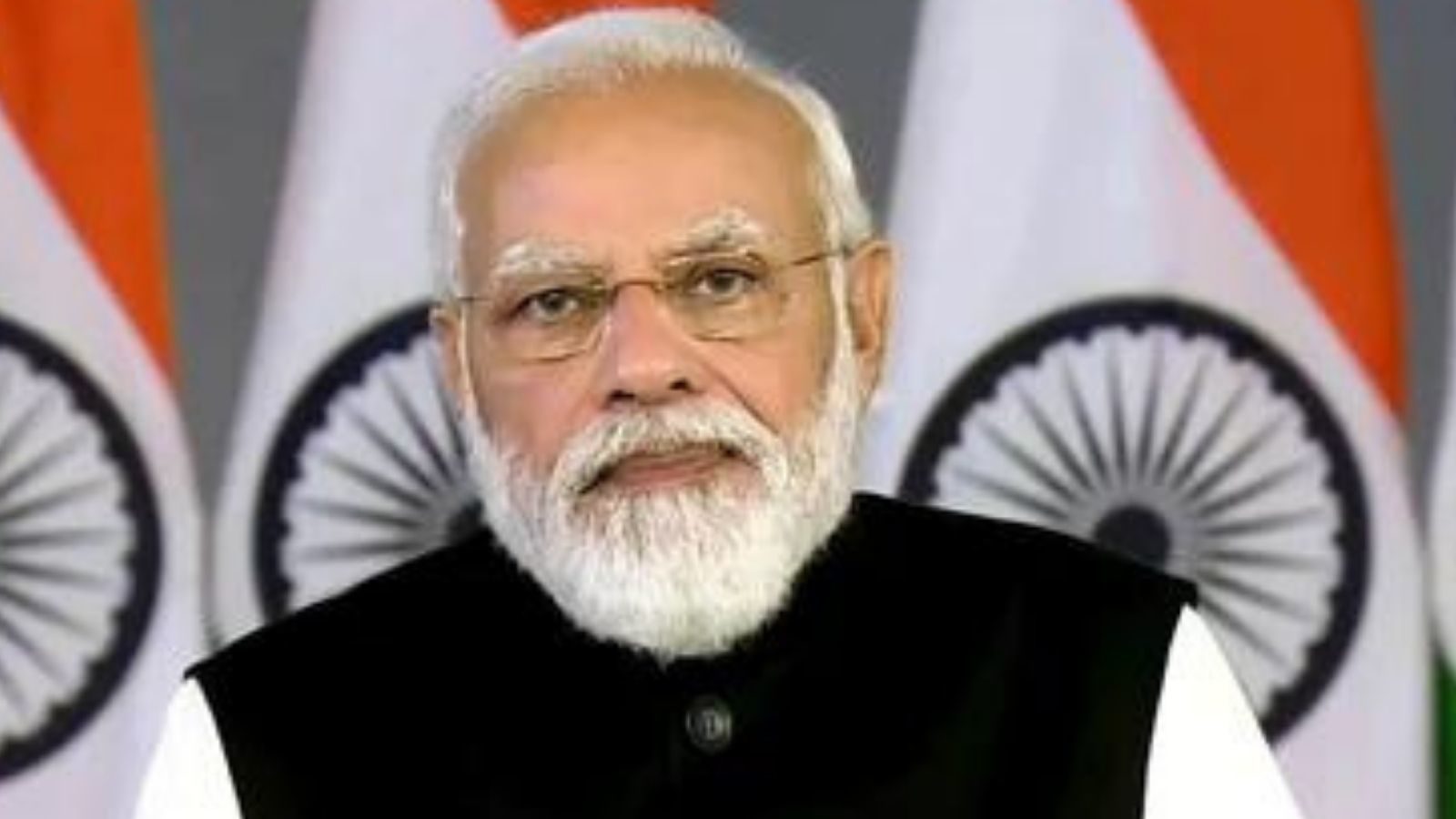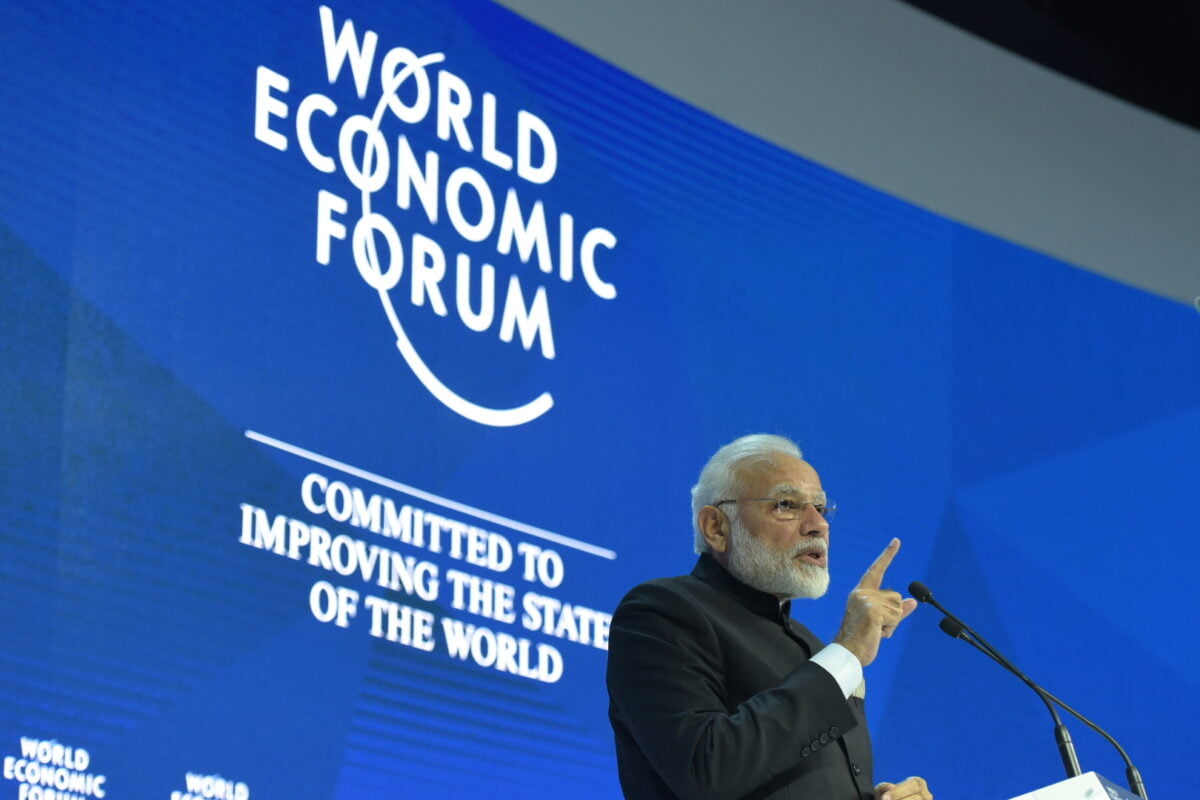The failure of the teleprompter during the Prime Minister’s talk to the WEF has sparked a meme fever on Twitter in 2022

The failure of the teleprompter during the Prime Minister’s talk to the WEF has sparked a meme fever on Twitter
PM Modi’s virtual address at the World Economic Forum had to be stopped and restarted due to a technical fault and buzzed flurry of tweets.
About World Economic Forum (WEF):
The World Economic Forum (WEF) is a non-governmental and lobbying organisation situated in Cologny, Switzerland’s canton of Geneva. Klaus Schwab, a German engineer and economist, started the company on January 24, 1971. “Improve the state of the world through engaging business, governmental, intellectual, and other leaders of society to drive global, regional, and industry agendas,” the foundation’s purpose states. It is mainly funded by its 1,000 member companies – typically global enterprises with more than $5 billion in revenue – and public subsidies.
The World Economic Forum is most known for its annual gathering in Davos, a ski resort in Switzerland’s Eastern Alps, held at the end of January. For up to five days, the conference brings together 3,000 paying members and selected participants – including investors, business leaders, political leaders, economists, celebrities, and journalists – to address global issues in 500 sessions.
In addition to Davos, the organisation hosts regional conferences in Africa, East Asia, Latin America, and India and two annual gatherings in China and the United Arab Emirates. It also publishes several studies, involves its members in sector-specific activities, and provides a platform for leaders from various stakeholder groups to collaborate on multiple projects and initiatives.
The Forum believes that a globalised world is best controlled by a self-selected alliance of multinational corporations, governments, and civil society organisations (CSOs), as seen by projects such as the “Great Reset” and “Global Redesign.” It sees times of global unrest – such as the financial crisis and the COVID-19 pandemic – as opportunities to further up its programmatic efforts.
Over the years, the World Economic Forum and its annual conference in Davos have been criticised. The public cost of security, the organisation’s tax-exempt status, unclear decision processes and membership criteria, a lack of financial transparency, the environmental footprint of its annual meetings, and institutional whitewashing initiatives are among the concerns raised about the conference the WEF. In February 2021, the Swiss federal government decided to lower its annual donations to the World Economic Forum in response to complaints from the Swiss public.

The Davos World Economic Forum 2022 will begin on January 17; Prime Minister Narendra Modi will address it on the summit’s first day.
Narendra Modi will speak at the World Economic Forum’s online Davos Agenda conference on the opening day of the five-day event, which begins on January 17, among a slew of other world leaders who will discuss their views for the world in 2022.
While the World Economic Forum’s physical annual meeting in Davos, Switzerland, was postponed owing to the coronavirus epidemic, the ‘Davos Agenda’ summit will be held digitally for the second year in a row during the event’s previously scheduled week. It plans to hold the annual meeting for 2022 later this year.
The World Economic Forum announced the dates, saying that ‘Davos Agenda 2022’ will be the first worldwide venue for major world leaders to discuss their thoughts for 2022, with the topic of ‘The State of the World.’ Heads of state and government will join CEOs and other executives for a virtual week-long discussion on significant collective challenges and how to address them. The discussion will serve as a warm-up for the Annual Meeting in Davos in early July.
Along with Modi, world leaders giving ‘State of the World’ particular addresses include Japan’s Prime Minister Kishida Fumio, UN Secretary-General Antonio Guterres, European Commission President Ursula von der Leyen, Australian Prime Minister Scott Morrison, Indonesian President Joko Widodo, Israeli Prime Minister Naftali Bennett, US Treasury Secretary Janet L Yellen, and Nigeria’s Vice-President Yemi Osinbajo.
According to the WEF, global inequalities have been exacerbated by dramatically diverse pandemic experiences, which promotes itself as a worldwide organisation for public-private cooperation. Combined with new strains, vaccine inequities have further hampered global economic recovery.
COVID-19 is merely one of the urgent global crises that could become unmanageable unless world leaders embrace proactive collaboration, according to the Davos Agenda, which will focus on encouraging concerted action among key international stakeholders. The World Economic Forum’s Founder and Executive Chairman, Klaus Schwab, stated, “Everyone is hoping that by 2022, the COVID-19 pandemic, as well as the difficulties that preceded it, would have passed. However, we face significant global issues, ranging from climate change to rebuilding trust and social cohesion ” Leaders will need to adopt new paradigms, think long term, rekindle cooperation, and act methodically to address problems.
The Davos Agenda 2022 serves as a springboard for the necessary discourse for global collaboration in 2022. The Davos Agenda 2022 will provide essential insights into a range of critical topics through special addresses and discussions with leaders of G20 economies and international organisations. The WEF stated that “participants will hear firsthand how these leaders will push the action in these and other areas.”
The summit will bring together government and business leaders, international organisations, and civil society organisations to discuss their opinions, ideas, and plans on some of the world’s most important challenges, including climate change, social contracts, and vaccination justice. These gatherings will also serve as a platform for a broader connection, allowing members of the public to participate and engage in the conversation. WHO Director-General Tedros Adhanom Ghebreyesus, IMF Managing Director Kristalina Georgieva, US Special Presidential Envoy for Climate Change John F Kerry, European Central Bank President Christine Lagarde, and WTO Director-General Ngozi Okonjo-Iweala are among the top leaders slated to attend.
The launch of many WEF projects to speed the race to net-zero emissions, the economic opportunity of nature-positive solutions, and cyber resilience will also be part of the Davos Agenda 2022. Additional launches will take place between January 17 and 21, covering a variety of critical topics such as strengthening global value chains, building economies in fragile markets through humanitarian investing, closing the vaccine manufacturing gap, and using data solutions to prepare for the next pandemic.
Highlights of the event-

Prime Minister Narendra Modi told global investors that “now is the ideal moment to invest in India,” while highlighting India’s capabilities and his government’s actions to promote “ease of doing business.”
Mr Modi pressed for reforms in multilateral organisations to meet the present and future challenges while delivering the “State of the World” particular address in virtual format at the World Economic Forum in Davos, Switzerland.
Mr Modi warned that “throwaway culture and consumerism” had exacerbated the climate crisis, and he called for a shift from a “take-make-use-dispose” to a “circular economy.”
Mr Modi told investors how India gave medicines and vaccines to the world as part of the “One Earth One Health” goal, expressing concern about global supply chain disruptions, inflation, and climate change. He advocated for a “Pro Planet People” (P3) approach in this setting.
“As a robust democracy, India has offered the globe a bouquet of optimism,” he said, adding that this bouquet included India’s technology and its people’s skill. Mr Modi praised India as the “world’s pharmacy” and the world’s third-largest pharma producer, reminding investors that India is delivering a “record number of software engineers” to the global workforce, with more than 50 lakh software developers employed in the country.
The PM said that only a few hundred start-ups in India in 2014, but that figure has already risen to over 60,000. He also mentioned the $26 billion in productivity-linked incentives granted by his government in 14 areas to promote entrepreneurial spirit and new technological technology. Mr Modi also claimed that his government had improved the ease of doing business, simplified corporate tax rates, decreased government involvement, and cut the number of required compliances by 25,000 last year. Mr Modi also spoke of India’s “high-growth” trajectory, which he vowed would be “green, clean, and reliable,” with “welfare and wellness” as critical components.
He claimed that India was combating another Covid-19 wave with vigilance and prudence while sustaining economic progress. The country was beaming with confidence after delivering over 160 crore vaccines to its population.
India was “making policies and decisions concerning the current as well as the ambitions for the next 25 years” today, he said. He noted that India has “established the aim of rapid growth, a saturation of welfare and wellness” throughout this time.
In addition, he stated that India was focused on making reforms on the correct path and that international economic experts have commended India’s initiatives. “We shall live up to all of the world’s expectations of us,” Mr Modi declared.
‘A technical fault triggers teleprompter PM’ bogie during a WEF speech: Modi is unable to talk due to a teleprompter malfunction?

Was there a teleprompter malfunction or a technological issue? After being forced to restart his virtual talk at the World Economic Forum’s (WEF) Davos agenda, Narendra Modi’s detractors and supporters argue over this subject.
The PM was seen stopping before gazing to his left a few seconds into his WEF talk on Monday. He then put on his earphones and checked if he was audible with WEF Executive Chairman Klaus Schwab. The PM resumed his remarks when Schwab replied affirmatively.
The interruption was just under two minutes long.
Modi’s detractors in the Opposition said that he ran out of words because his teleprompter failed, pointing to previous criticism from politicians like Rahul Gandhi that Modi can’t speak unless he’s fed phrases through a teleprompter.
The official Twitter handle of the Congress party blamed the glitch on a teleprompter failure, using the hashtag ‘#TeleprompterPM.’ While an official government statement has yet to be released, official sources claim that the actual issue is the WEF’s inadequate connectivity and event sequencing.
Suresh Nakhua, the official spokesperson for the Bharatiya Janata Party (BJP), blamed the failure on WEF technicians.
“Don’t people who are enthralled by the technical fault realise that the problem is on the WEF’s end?” They were unable to patch PM and requested that he begin again, as evidenced by Klaus Schwab’s statement that he would give a brief introduction and then open the session,” he wrote.
Opposition leaders, on the other hand, pounced on this defence, labelling it part of a ‘toolkit.’ “Teleprompter + Toolkit = Technological Advancement,” Shiv Sena Rajya Sabha MP Priyanka Chaturvedi tweeted.
Prime Minister Narendra Modi paused in the middle of his online speech at the World Economic Forum’s Davos Agenda event. Many speculated that his speech teleprompter may have hung up in the middle of his speech, catching the PM off unprepared.
The golden trifecta consists of memes, trolls, and Twitter. It is universally acknowledged that something is trending on Twitter and other social media platforms at any given time, and someone is being trolled. A country’s Prime Minister being trolled is not something that happens regularly. Trolls in India are in luck today because the topic of today’s memes is none other than Prime Minister Narendra Modi himself.
The date was January 17, 2022, and the Prime Minister of India was speaking at the Davos Agenda of the World Economic Forum. He was using video conferencing to address a live crowd. Modi said on a variety of topics. The Prime Minister unexpectedly stopped speaking in the middle of his address as he was ready to begin talking about Indian talent and temperament. It was almost as if Modi didn’t know what to say.
It was considered that the Indian Prime Minister was genuinely at a loss for words and that the teleprompter’s interruption was what brought the great leader to a halt. PM Modi inquired if he was fully audible or not after a few awkward seconds of quiet. The WEP officer informed him that he was being heard correctly. PM Modi next inquired whether his interpreter was also audible to the audience, to which he received the identical response. It was later discovered that the problem was with the interpretation. According to reports, Modi’s address began halfway through and was not accompanied by an English translation.
Modi began his remarks shortly after. It was assumed that the Prime Minister and his teleprompter would find the appropriate words. Trolls and memes have found their theme for today, whatever the issue may be. Since the speech, Twitter has been flooded with memes.
Whatever the cause, Twitter exploded into a meme frenzy, and the incident became the top trending topic on Twitter.
‘Even the teleprompter couldn’t handle too many lies,’ said Congress leader Rahul Gandhi, referring to Prime Minister Narendra Modi.
Many consider this to be a humiliating moment for Narendra Modi. A country’s Prime Minister being trolled is not something that happens regularly. It was believed that the Indian Prime Minister was genuinely at a loss for words and that the teleprompter’s interruption was what brought the great leader to a halt. PM Modi inqui0red if he was fully audible or not after a few awkward seconds of quiet.
The WEP officer informed him that he was being heard correctly. PM Modi next inquired whether his interpreter was also audible to the audience, to which he received the identical response. It was later discovered that the problem was with the interpretation. According to reports, Modi’s address began halfway through and was not accompanied by an English translation.
It was assumed that the Prime Minister and his teleprompter would find the appropriate words. Trolls and memes have found their theme for today, whatever the issue may be. Since the speech, Twitter has been flooded with memes.
edited and proofread by nikita sharma




